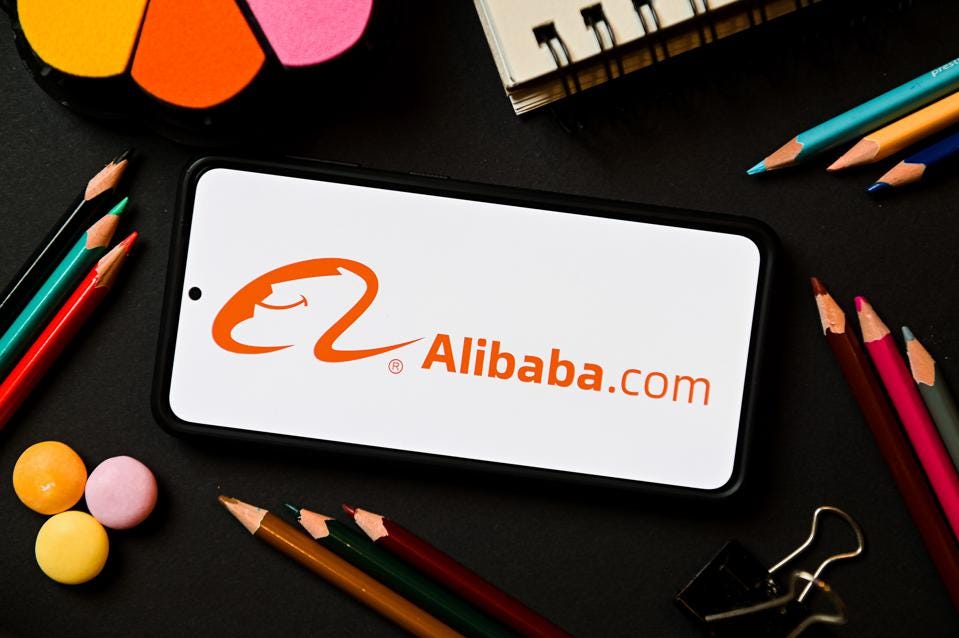B2B Growth is an interesting topic for companies of all sizes in any industry, whether it’s for Big Tech or startups, from SaaS to to marketplaces to advertising sales. It is also the backbone of any monetization efforts. After all, they are the paying customers.
The debate for whether Sales-led growth (SLG) or Product-led growth (PLG) is more effective is heated. We’ve witnessed the success of many recent PLG success stories, such as Slack, Notion, or Zoom. The power of selling without sales can significantly reduce operating expenses and achieve a scaled effect beyond the restriction of distance and time. Yet having a strong sales team is so much more effective in terms of generating outcomes.
My time at Alibaba.com was faced with the exact situation where I, as the Growth Product Manager need to reinvent the sales model outside of China to move pass its restriction in distance and time.
Alibaba Business Unit Background
Alibaba.com, internally as ICBU (international Commerce Wholesale Business Unit), is the oldest business within Alibaba Group. While it was the cash cow of Alibaba Group back in the day (we still use a cow as our BU mascot), supporting emerging business units to grow, such as Taobao and Alipay, today it represents only 2% of the total revenues of the Alibaba Group. (2022)
Old as it may be, it is still one of the largest global B2B wholesale marketplaces in the world where millions of business buyers source suppliers internationally (the majority is Chinese suppliers). Given its relatively low impact on the total revenues and its historical meaning to the Group, a few years ago, Alibaba.com was being given a new purpose as one of the key products to fulfill the Group’s globalization strategy, along with its other products in the retail space, such as AliExpress and Lazada. That new purpose — to be more specific, is to turn this China-inbound marketplace into a global buy, global sell marketplace.
The first step to Alibaba.com’s international expansion lies in its supply side, as it is already the dominant player in the global B2B sourcing space with buyers from all over the world (our market share is more than number 2 to number 10 combined)[Strength], predominantly the US. It’s the supply side that needs to be diversified as today it is largely the Chinese suppliers. Meanwhile, there are 3 external forces growing in today’s globalization efforts:
- [Weakness] The rising labor cost is pushing more and more Chinese manufacturing capacity to outside of China
- [Threat] The geopolitics and US-Sino relations are forming a pulling force to rethink global supply chain
- [Opportunity] Manufacturing suppliers outside of China, including those in the Western countries are not yet digitized (a lot of B2B trades are done in Trade Shows and F2F handshake meetings)
With this simplified SWOT analysis, a vision is formed: Alibaba.com can make it easy to do business for global suppliers. A continuity of its original mission statement of “make it easy to do business anywhere”, not just for the Chinese businesses, but for businesses all around the world.
Specifically, we need to acquire more suppliers outside of China, from Southeast Asia to the EU, and from Northeast Asia to North America. But like any other international expansion efforts, it is extremely complex to navigate the different characteristics and environments in different regions, from supply category to government regulations. My role at Alibaba was to focus on the North America region and acquiring North American suppliers.
Product and Team Background
The business model of Alibaba.com is simple but very different from that of Amazon.com. Being a marketplace, instead of generating revenues from its sales commission or sales of good, it makes money from two revenue sources: 1) supplier membership fee, and 2) advertising (“Customer Management Services” on its 10-K)
To join Alibaba.com as a supplier (seller/merchant), a business would need to firstly pay an annual membership fee upfront to get access to millions of business buyer traffic on the marketplace. Like with Google, it’s not enough to just have a live website, being listed on the marketplace does not guarantee your traffic, you need to list your products and do your e-commerce SEO (optimizing your product listing, such as title, description, images, prices etc). And then, in order to get the real prize of traffic, you need to pay for the advertising. There are “keyword advertising” or “KWA”, and premium sponsored ads that make sure your product is always showing up on top of the results.
The actual “selling” or transactions, however, are “free”. Mainly because in the B2B trade world, many of the products are open to customization, instead of “Ready to Ship” or “RTS”. For example, an Amazon e-scooter seller may not own the manufacturing side, but simply do its research on Amazon, send the specifications of a “new e-scooter” to a supplier on Alibaba.com, and ship them directly to Amazon’s warehouse (using FBA or “Fulfillment by Amazon”) and then to the consumers. This is called Drop-shipping. And since the product customization process can take time that varies quite a lot, it is hard to charge a fixed sales commission on customized products sold. So many buying and selling actually takes place outside of the marketplace, and the marketplace is serving somewhat as a yellow page with inquiry services. And that’s ok, since Alibaba.com makes money from the seller membership fee and ad spend.
Historically, the selling of Alibaba.com’s membership relies solely on human sales team, thus the original Chinese Gold Supplier (CGS) sales team led by Jack Ma back in 90s and early 2000 is also called “the Chinese supplier iron army” or “中供铁军”. On top of direct sales team, channel partnership has been widely used by many regional offices.
After a supplier signed up with Alibaba.com, an account manager will be assigned to them and guide them through initial storefront setup and later ad upsell and renewal.
Business Problem Statement
At the time I started working at Alibaba.com in the NYC office, there was only direct sales team, so the business was completely sales-led. We had experienced sales and marketing leaders who had led the 0–1 growth for our global supplier base, also called Global Gold Supplier (GGS).
Turns out, not surprisingly, the customer satisfaction rate, measured by both the customers’ own words and their engagement (30 days login times), were extremely low, which naturally led to a low double-digit renewal rate after one-year membership.
The product, at the time, was a direct copy of our Chinese version, so on the design front, it was not fit for non-Chinese users to use. For example, the platform notification can sometimes be Chinese instead of English or the local language; and a lot of the features, including product upload and inquiry response require a huge amount of man-power (which is ok with the Chinese supplier customers as they typically would hire a full-time employee or a team to manage those).
Not only did the product conflict with the customer, the local teams were having conflicts with the HQ team in Hangzhou on product strategy and communications as well. Many feature updates were launched without any communications to the front-line sales and account management teams, or even the customers.
So in short, we were facing 3 major issues that were stopping us from generating a great growth outcome:
- Our product funnel was leaking in the engagement and renewal stage, so no matter how many customers we acquire, we would need to do it again the next year.
- A leaky funnel has led to an unsustainable growth where the CAC was so high that we were losing money with each additional customer.
- We were unable to quickly improve our product to patch the leaky funnel because 1) we had very different product philosophies and strategies between local and HQ teams, and 2) there was no effective communication channel to resolve that due to time difference among many other organizational inefficiencies.
In the next chapter, I will continue this topic and discuss how we solved each of these 3 problems to achieve growth success.
Hans Wu

